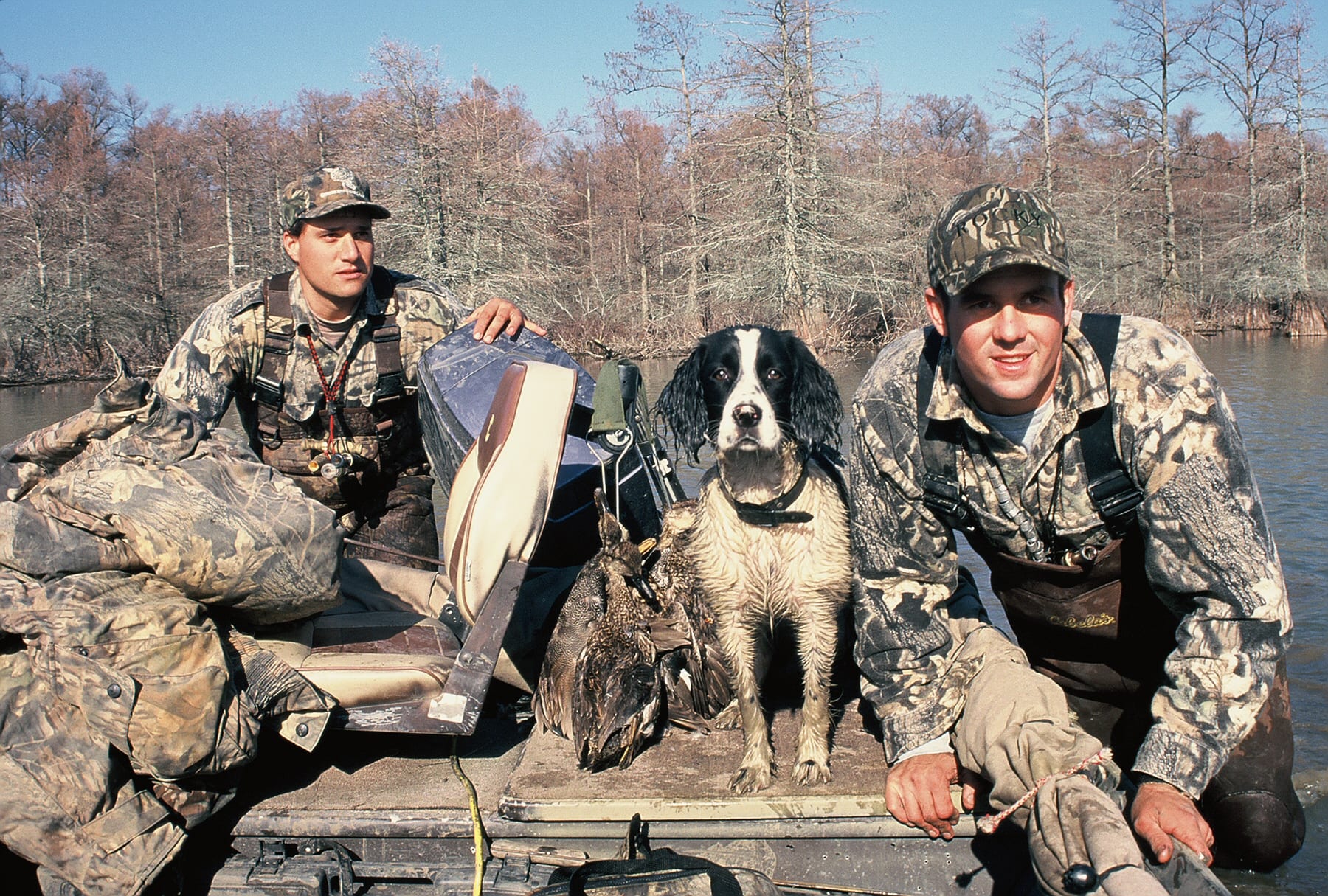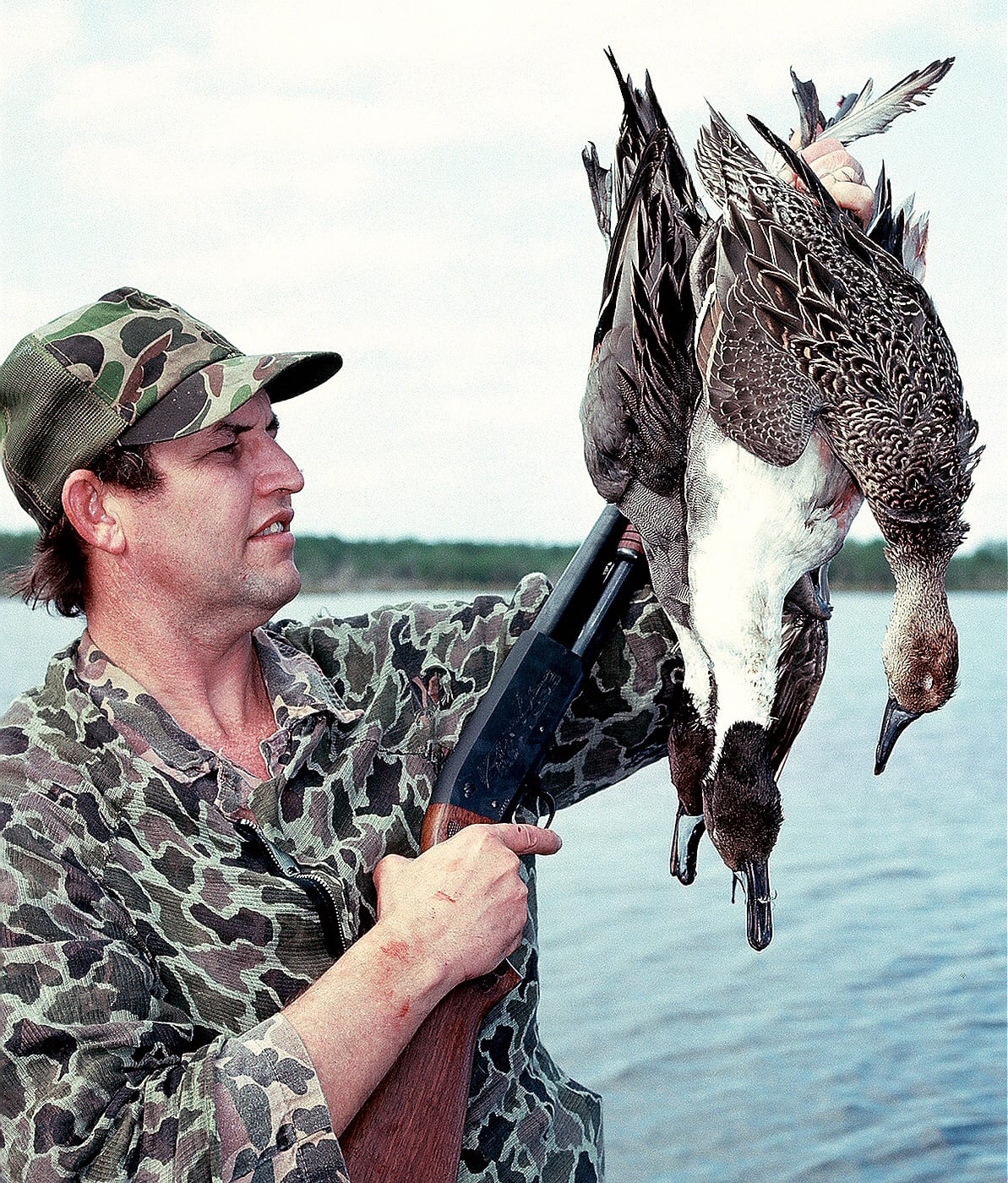Florida’s Winter Duck Hunting
On-your-own waterfowling is still good
in the people-booming Sunshine State.
By Bob McNally
No one, least of all me, should believe that the places for Florida waterfowlers to tag a few ducks on public wetlands today is as wide open to access as it was 20 years ago.
I’ve lived in Florida for over 40 years, and in that time have shot ducks about everywhere you can float a decoy.
And while there still is a staggering availability of options for public duck hunting in the state, the truth is millions more people live in Florida today compared to a few decades ago. And that swelling population makes locating and enjoying stellar Florida duck hunting a challenge — at least to do it consistently.
But December and January are prime for Florid ducks, because northern waters are frozen, and waterfowl food is sparse, so birds head South, like so many other snow birds.
Even today great shotgunning still can be found on public water within the shadows of some of the biggest metropolitan areas of the state, at least for hunters willing to work at it. Moreover, not everyone within earshot of duck hunters necessarily is against gunners having their way with birds. Moreover, wintering ducks in Florida often can be found in huntable numbers almost in the back yards of state residents.
Florida duck hunters can use this knowledge to their advantage if they do their homework and learn where migrating waterfowl are loafing during their fall-winter vacation in the Sunshine State. If such places are near cities, towns and private property, learn if it’s okay to hunt the place by contacting the area game warden.
Superb duck hunting can be found in huge regions where the state’s many rivers wind through marsh and woodland terrain that attracts large numbers of waterfowl. In the northern half of the state many of the big rivers have heavily-wooded shorelines, which provide great habitat to wood ducks and black belly tree ducks (which are becoming an increasingly abundant and important duck to Florida shotgunners). In the bigger rivers, like the St. Johns, there are wide areas that form oversize lakes like George, Crescent, Woodruff, Monroe, Rodman Reservoir and many more.
The wide lakes (and to some extent the broader regions of the rivers themselves) have lots of vegetation that often stretch far from shore. Eel grass is common, but so is hydrilla and floating duck weed. Duck weed is prime waterfowl food for puddlers, and biologists say hydrilla is a vitally important duck food in Florida, too. This vegetation attracts teal, ringed-neck ducks, shovellers, mottled ducks, and at times widgeon and gone-wild mallards (rare are state mallards true migrants, but rather generations of domestic mallards that do not leave Florida — and they are legal game).
The best way to scout the big rivers like the St. Johns, Kissimmee, Apalachicola, Withlacoochee and big lake chains like the Harris and Tsala Apopka, is to simply dedicate a day or an afternoon to boat running shoreline areas and looking for ducks. It takes time and effort, but that’s what’s needed in today’s Florida public duck hunting arena.
Sometimes the best hunting in the biggest rivers and lakes (especially in areas having abundant shoreline homes) is to hunt vacant small islands in the waterways. Boat blinds also make sense in big water. Gunners in a properly camouflaged boat covered with bulrushes, palmettos, or using an Avery type boat cover blind, have a big advantage over their shore-bound brethren in consistently taking pressured Florida ducks from public water. Getting out away from shoreline homes also avoids resident confrontations, and often ducks are more easily decoyed to open water areas far from land.
For years buddies and I would hunt Florida ducks early in the morning, then break up in teams in our johnboats and go fishing. While boat riding we’d look for ducks resting in backwaters and potholes around river areas and in wide “lakes”. This broke up the monotony of dedicating a whole afternoon of “looking” for ducks, and we caught fish, too.
This kind of fishing “research” also works in more coastal areas where the bulk of the state’s migrating waterfowl, especially puddle ducks, can be taken.
This helped us learn the broad, marshy upper St. Johns River area west of Merritt Island National Wildlife Refuge. We’d hunt the refuge in the morning, break for lunch, then fish or hunt afternoons in the vast and wild upper St. Johns marsh.
We similarly hunted Merritt Island in mornings, spending afternoons learning prime public spots along the Indian and Banana Rivers outside the refuge while fishing.
Often the surrounding areas of popular public duck spots like Merritt, Guana River WMA, and the PotashCorp WMA can have superb shooting because birds are pressured out of public areas. Best hunting in such periphery zones often is had on the busiest public hunting days because birds are looking to escape gunners, and can be lured into secondary spots within a mile or two of traditional hot public duck areas.
Tidewater marshes along the Intracoastal Waterway on both coasts offer surprisingly good duck hunting. Many of the state’s top inshore anglers who target redfish and snook know the small potholes in their fishing areas that hold migrating waterfowl. Not all give up such duck hunting information easily, but it’s worth asking such guides if you know them or charter them.
When running the bigger lakes we’d almost always locate backwater sloughs and pockets that were full of teal, mottled ducks, ringed-necks, and sometimes widgeon, shovellers, and even a few pintails.
The big lakes of the state can be daunting to run in small duck boats long before daybreak on a hunt. A couple teams of duck hunters in two or three boats working together is a good safety rule. Know where you’re going and how to get back via compass, portable GPS, and good old fashion maps. Cell phones always are wise to have with you, but they can fail in the boondocks, so don’t rely on them completely.
Like most things in life, what you get out of public duck hunting in Florida is largely dependent on the amount of time and effort put into it. If you’re satisfied with tossing out a dozen decoys in a hard-pressured public area a couple mornings every autumn or winter and take home a few teal or shovellers, great, have a good time.
If, however, you expect to see clouds of bluewings, clusters of widgeon, and tight groups of ringed-necks buzzing your dekes from shooting light to the last bird of a limit, than you’ve got to work hardto find it, and then make it happen.
But it’s time and work well spent, and it can be done by anyone with the desire to bring it to fruition.
Never forget that during some winters up to 25 percent of the Atlantic Flyway duck population has migrated into Florida. All hunters have to do is find them, and the places to publicly gun them.
###############
Photo Captions:
1. Hard work and portable boat blinds make for consistently good duck hunting during winter in Florida.
2. Pintails are among the most prized of Florida ducks, and late season is a good time to target them as the bulk of the birds winter in the state as northern lakes and feeding areas freeze and cover with snow.


